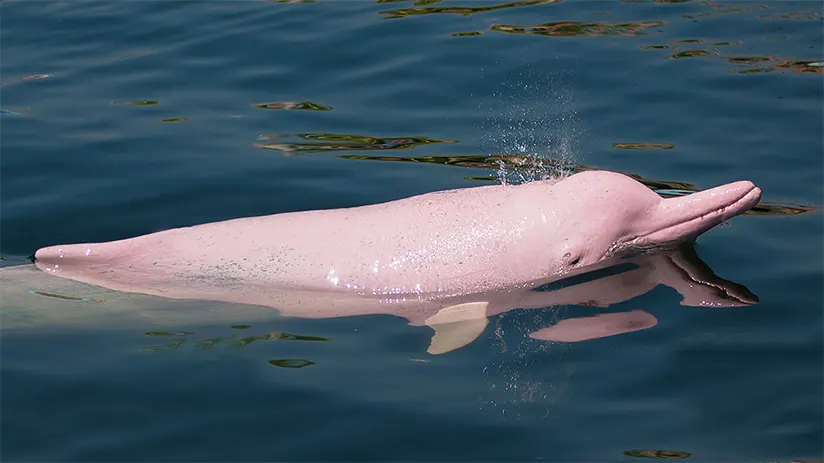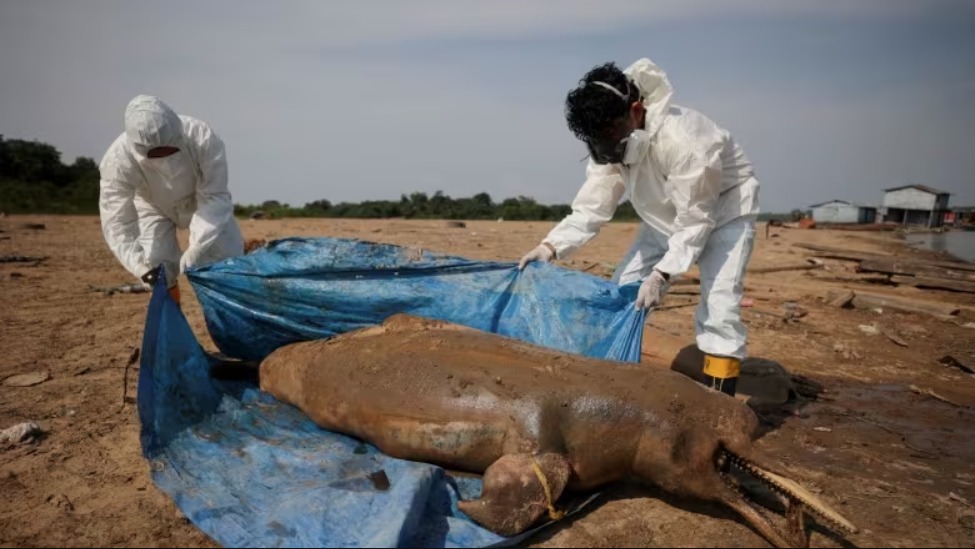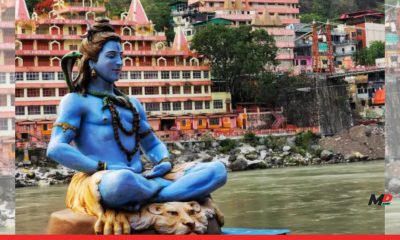Published
10 months agoon

Over the past week, the lifeless bodies of 120 river dolphins have been discovered adrift in a tributary of the Amazon River in Brazil. Experts speculate that the distressing situation may be attributed to the effects of severe drought and high temperatures as temperatures exceeded 39° C (102° F) in the Tefe Lake region.
The Mamiraua Institute, a research group affiliated with Brazil’s Ministry of Science, Technology, and Innovation, reported the discovery of two additional deceased dolphins in the vicinity of Tefe Lake.
According to a recent study that was published in the journal PLOS Climate, climatic extremes like heat and drought are becoming a silent killer of the endangered dolphins of the Amazon.
Concerns about global warming and the dangers it poses to species in vulnerable areas are sparked by the plight of these dolphins.
Researchers believe that portions of the river have heated up to temperatures that are unbearable for dolphins because of low river levels during a severe drought. Due to low oxygen levels in the water, thousands of fish have lately perished in the rivers of the Amazon.
The Wildlife Conservation Society (WCS) anAmazon River(INPA) undertook the study, which discovered a 20% decrease in the population of Amazon river dolphins (Inia geoffrensis) over the past decade. The loss of habitat, overfishing, and pollution are only a few of the causes highlighted by the experts as contributing to this fall. However, they discovered that climate extremes, such heat and drought, are contributing substantially more to the dolphins’ decline.

The Amazon freshwater dolphin, also known as the Boto, is a unique and iconic species. It is the largest freshwater dolphin in the world and is found only in the Amazon River basin and its tributaries. The Boto is an important part of the Amazon ecosystem, as it helps to control populations of fish and other aquatic animals. The Boto and the grey river dolphin called the “tucuxi” are on the International Union for Conservation of Nature’s red list of threatened species.
However, the Boto is facing a serious threat from climate change. Heat and drought are becoming more common and severe in the Amazon, and this is having a devastating impact on the Boto population.
The heat and low oxygen levels in freshwaters have several effects on the Boto population –
Botos are frequently silently and covertly killed by heat and drought. Botos are solitary creatures that frequently perish by themselves in far-off places. Because of this, it is challenging to determine the true scope of the issue. But according to biologists, heat and drought in recent years have killed thousands of Botos.
The Amazon environment is being significantly impacted by the disappearance of Botos. Apex predators, especially those at the top of the food chain, are Botos. Their absence is upsetting the ecosystem’s delicate equilibrium and allowing the populations of their prey species to flourish. Aquatic plants may become overgrazed as an outcome, amongst other issues.
Recently, scientists and other specialists continued to rescue the dead mammals from a lake and perform autopsies on the carcasses to identify the cause of death, among the stench of decomposing dolphins.
The Mamirauá Institute’s Ayan Fleischmann, a geoscience researcher, claims that other probable causes, such as illness and sewage contamination, are being researched. Although he acknowledged that water temperature and depth were “certainly a main component” of the mass mortality, he added.
He stated to The Guardian that “Last night at 6 pm, we measured more than 39 degrees Celsius (102.2° Fahrenheit) in Lake Tefé.” When the water in Lake Tefé hit 39° Celsius (102° Fahrenheit) on Thursday, more than 10 degrees above the typical temperature for this time of year, at least 70 of the carcasses came to the surface.
“Many communities are becoming isolated, without access to good quality water, without access to the river, which is their main means of transportation,” he added.
Nicson Marreira, mayor of Tefe, a city of 60,000 residents, said his government was unable to deliver food directly to some isolated communities because the rivers are dry.
A variety of measures can be taken to protect Botos from the effects of heat and drought. At the outset, it’s critical to lower greenhouse gas emissions to slow down climate change, as it helps to control the climate and provides a habitat for Botos, the Amazon rainforest needs to be maintained.
To prevent droughts, water resources must be managed responsibly. It’s important to monitor Boto populations and pinpoint the hot and dry regions where they are most vulnerable.
Finally, plans must be made to safeguard Botos in these regions, such as giving them access to alternative habitats and colder water.


Paris 2024 Olympics: 5 of the most stylish uniforms on show


FM showers special love on Bihar and Andhra Pradesh in Budget 2024, as Opposition leaders cry “Kursi Bachao”


DreameIndia Appoints Manu Sharma as Managing Director to lead its India Operations and Market Expansion


Amazon eyes Swiggy Instamart to boost Quick Commerce in India


Economic Survey urges creation of 78.51 Lakh non-farm jobs annually


Explained: The significance of Savan in India

